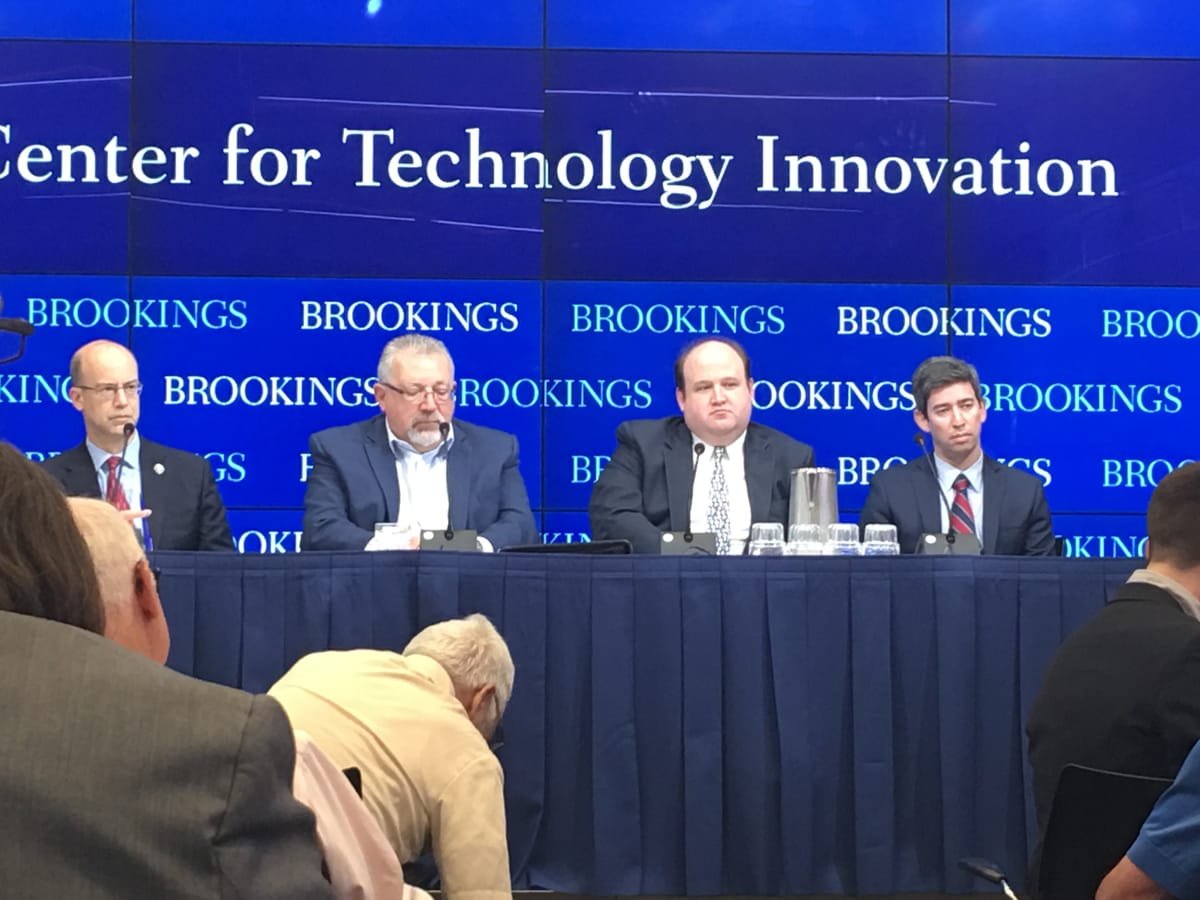Rural Broadband Focus Increasingly Necessary in Infrastructure Package, Say Blackburn and Panelists at Brookings
WASHINGTON, July 25, 2017 – Rural areas of Tennessee have lost business because they don’t have access to high-speed internet, Tennessee Republican Rep. Marsha Blackburn said Monday at a panel on broadband infrastructure hosted by the Brookings Institution. Trump was aggressively pushing new infrast

WASHINGTON, July 25, 2017 – Rural areas of Tennessee have lost business because they don’t have access to high-speed internet, Tennessee Republican Rep. Marsha Blackburn said Monday at a panel on broadband infrastructure hosted by the Brookings Institution.
Trump was aggressively pushing new infrastructure, said Blackburn, the chairwoman of the House Energy and Commerce Communications and Technology Subcommittee. Of the 19 counties she represents, 16 are rural, she said. When she goes into meetings with her constituents, the number one infrastructure issue is usually about broadband.
A woman raising a daughter and going back to college for nursing has to webstream some of her classes, she said. It took her four hours just to stream a lecture that lasted 45 minutes, Blackburn said.
The lack of broadband creates an opportunity gap, she said. But broadband can drive jobs, access to healthcare and educational opportunity.
The U.S. needs an investment of $130 billion to $150 billion in fiber infrastructure over the next five to seven years to meet the need, she said, citing a Deloitte analysis. She said unserved areas should be the first focus.
She also criticized the net neutrality rules put in place by the Obama administration Federal Communications Commission, saying that they had delayed the deployment of broadband – and that the agency’s rules are being revisited.
Brad Gillen, executive vice president of CTIA – the Wireless Association, , said he was pleased that discussions of infrastructure now involve broadband. That was not necessarily the case a year ago, during the presidential campaign.
Gillen also said that government funding will be necessary to address the digital.
Rick Cimerman, vice president of external and state affairs at NCTA – the Internet and Television Association, said that broadband investment will be driven by the private sector because the government’s resources are limited.
David Goldman, chief counsel for the Democrats on the House Communications and Technology Subcommittee, focused on H.R. 2479, the “Leading Infrastructure for Tomorrow’s America Act,” (LIFT Act), introduced by Rep. Frank Pallone, D-New Jersey. The bill aims to fund broadband internet, water, electrical and other infrastructure expenditures over five years.
The first section of the bill deals with broadband and sets aside $40 billion to ensure broadband communications technology is available to 98 percent of the population, he said. Goldman said that the bill prioritizes the unserved, and that the highest speed can’t be reached everywhere.
Jonathan Adelstein, CEO of the Wireless Infrastructure Association, said more spectrum is needed from the government. He also said rural areas place barriers to broadband because people don’t want towers in their backyards. When that happens, there’s no chance of getting broadband there.
Adelstein did appreciate the bipartisanship between the Republicans and Democrats.
“What I heard really today was an agreement upon the big issues about the need for getting this job done,” Adelstein said. “It’s really encouraging, I think, that there’s a recognition of broadband is something of a national treasure.”
Cimerman said there is a problem between the served and unserved, and he made a buffet analogy to get his point across.
“Once I gotten my plate and I’m gone and eating, I don’t go back in the line until all those little old ladies and all the kids and everyone else is gone through the line,” Cimerman said.
The underserved have at least something already, and there is a need to prioritize people who have nothing at all, Cimerman said.
(Photo by Casey Ryan.)










